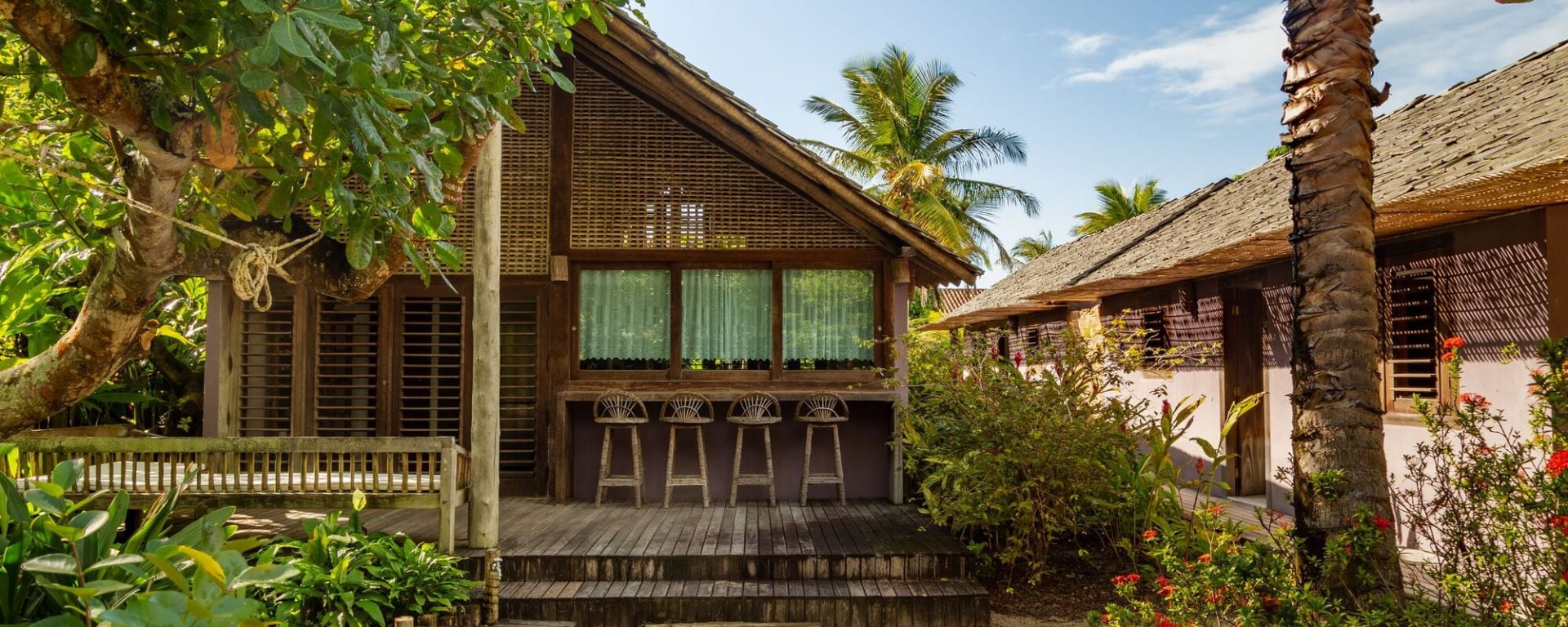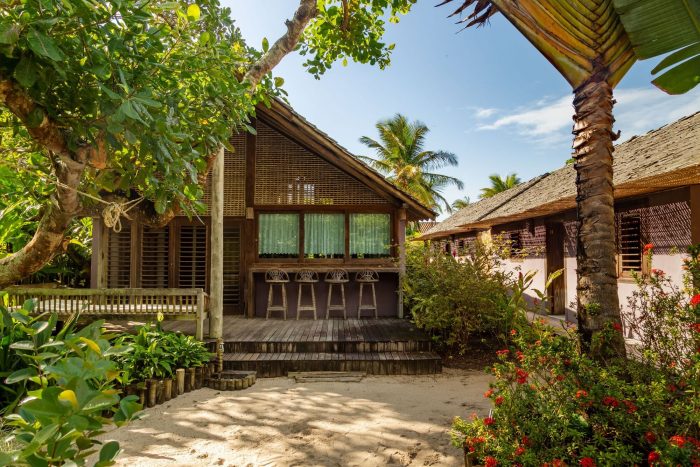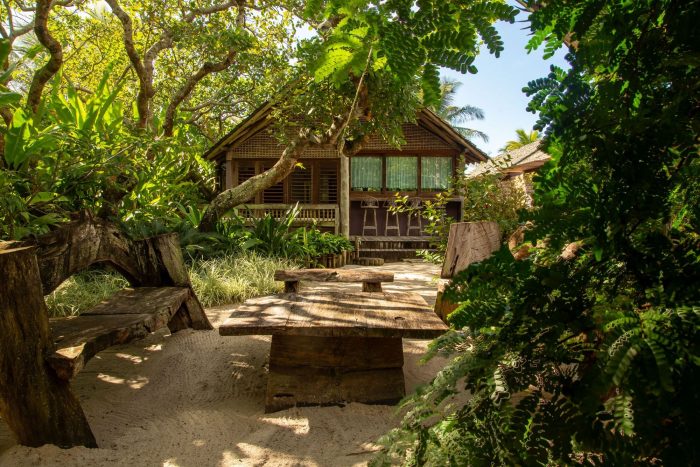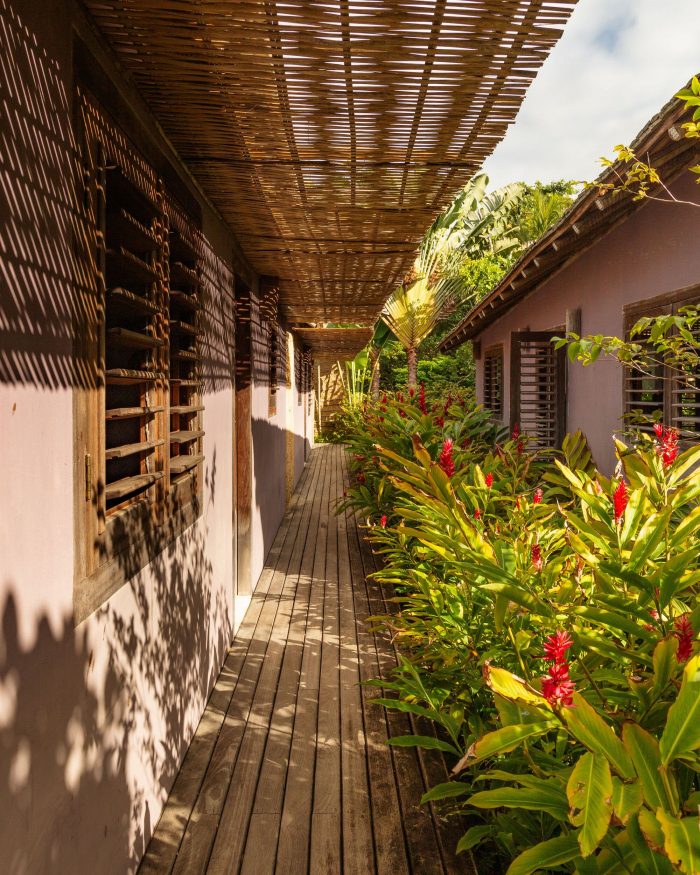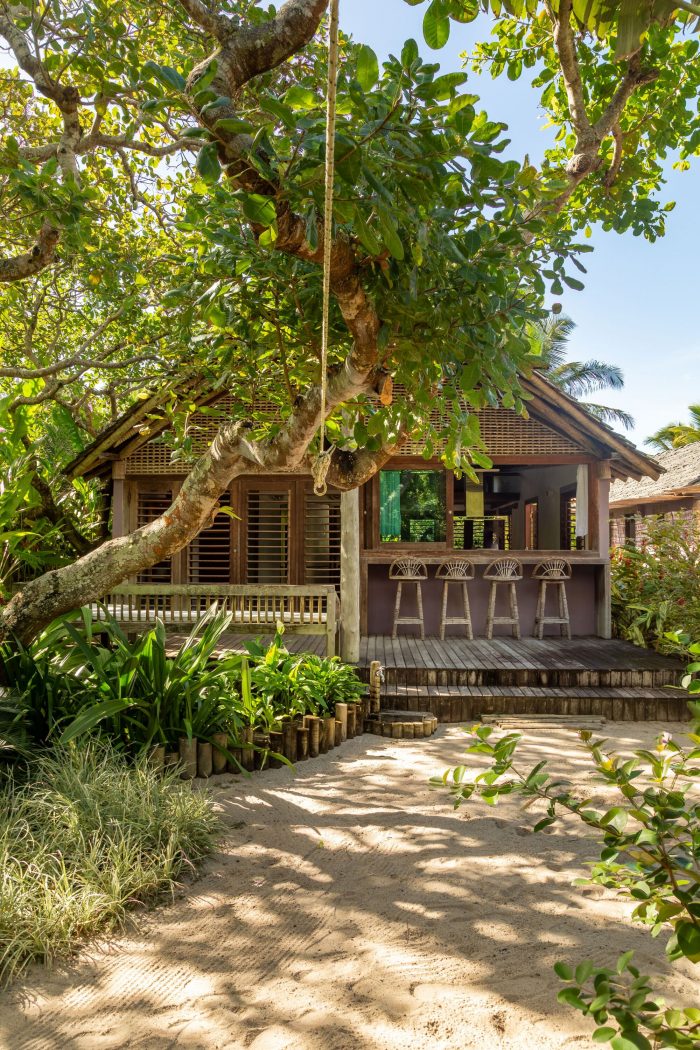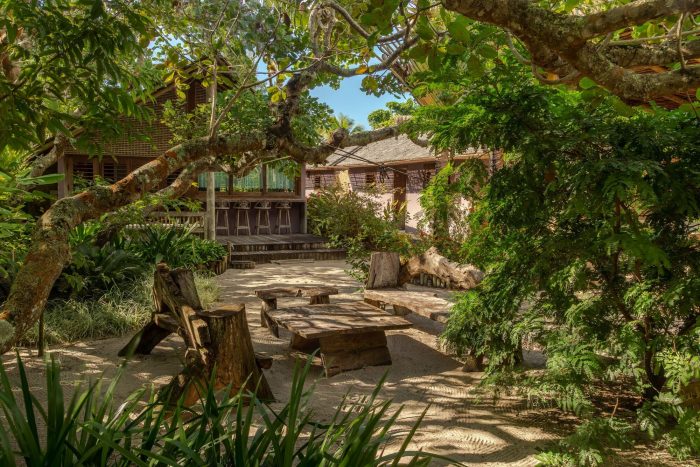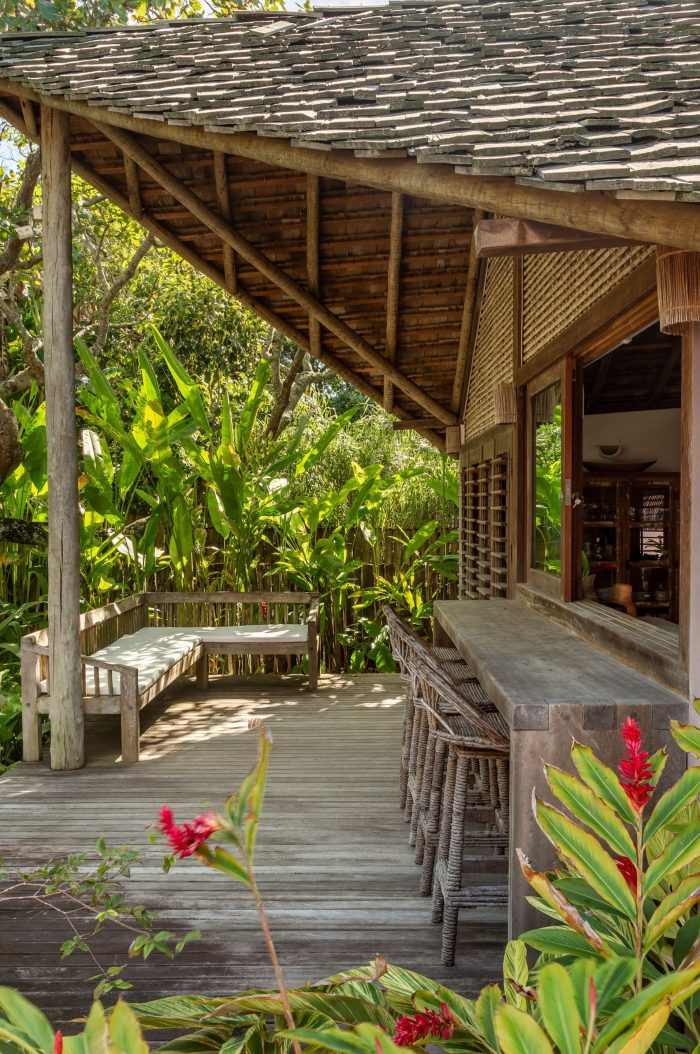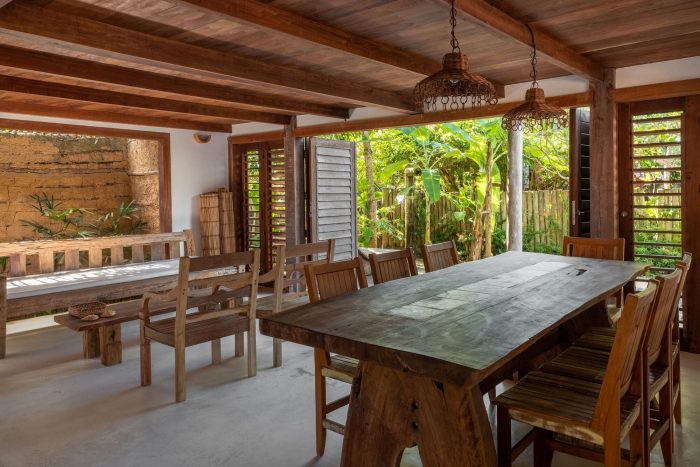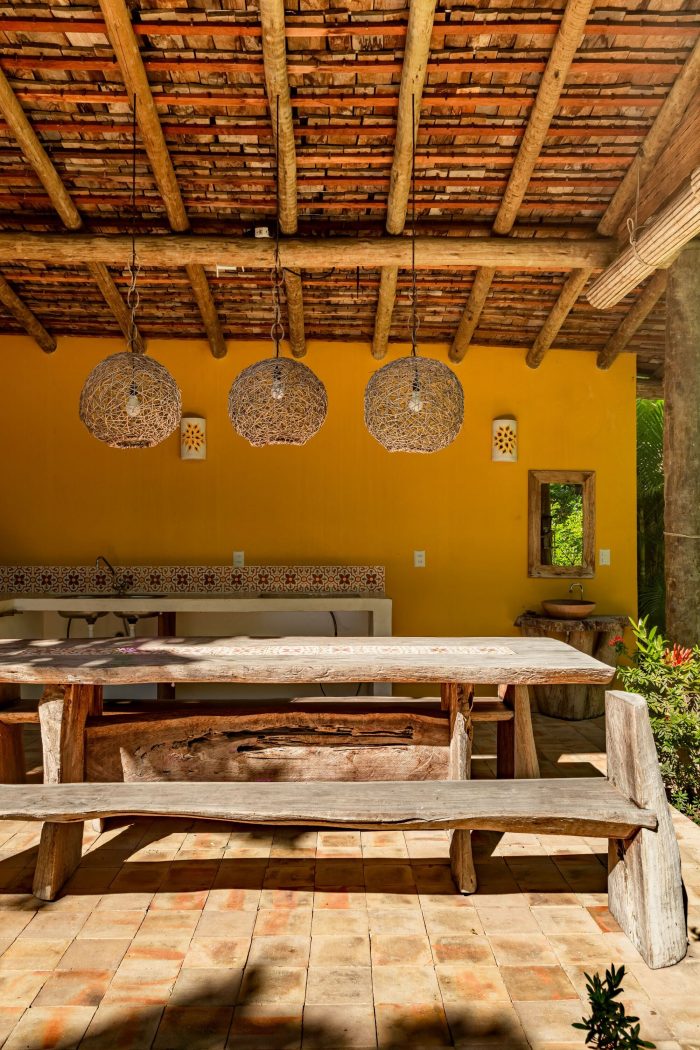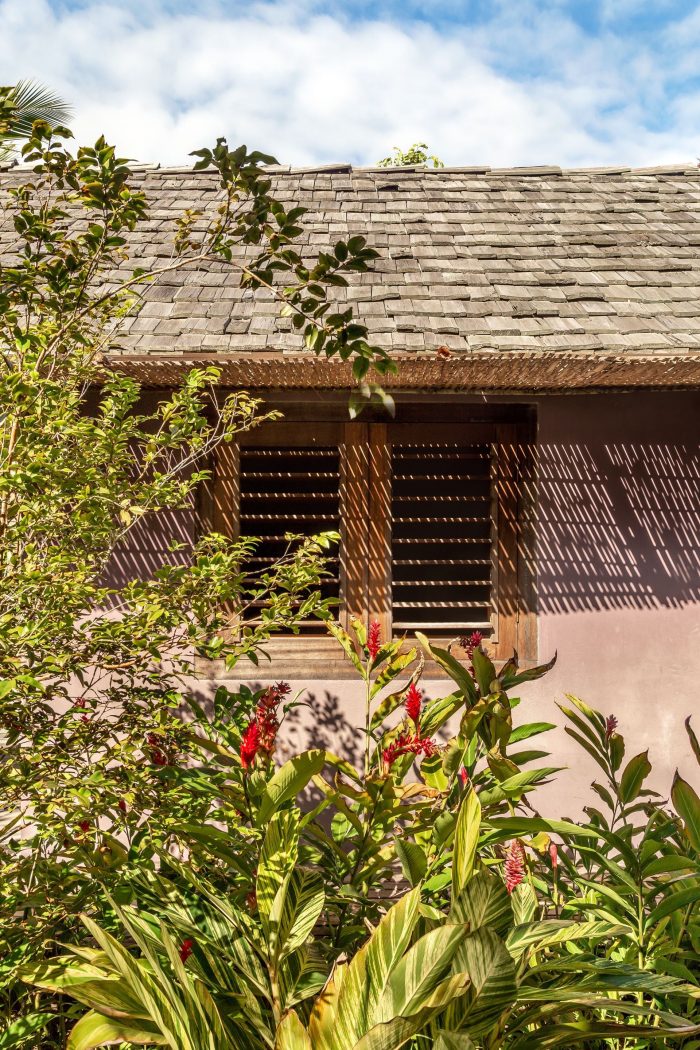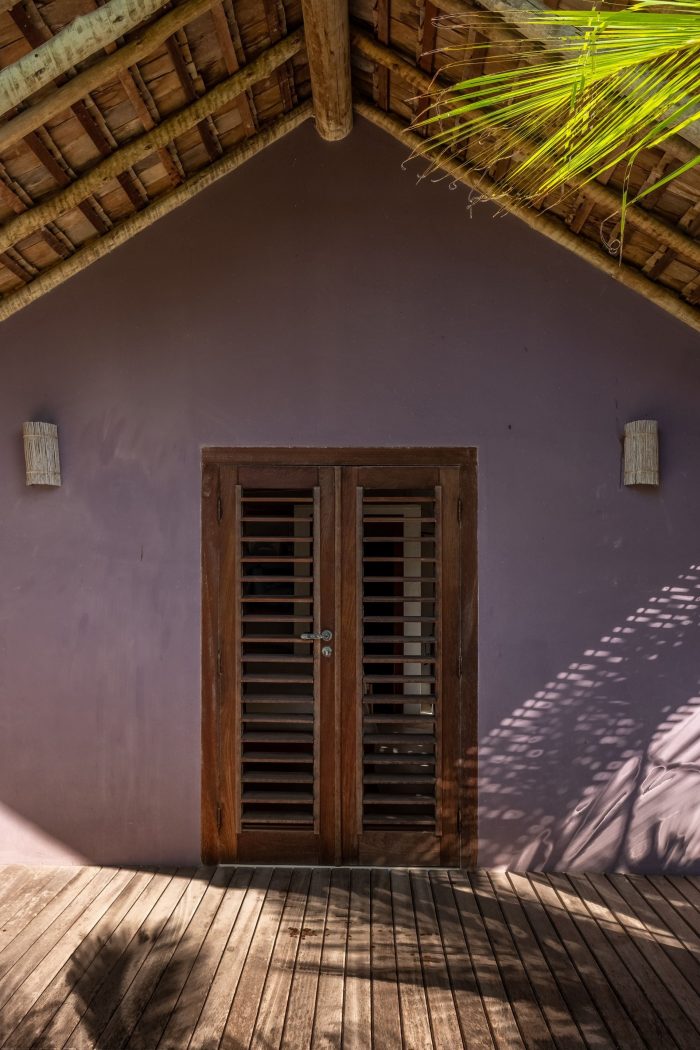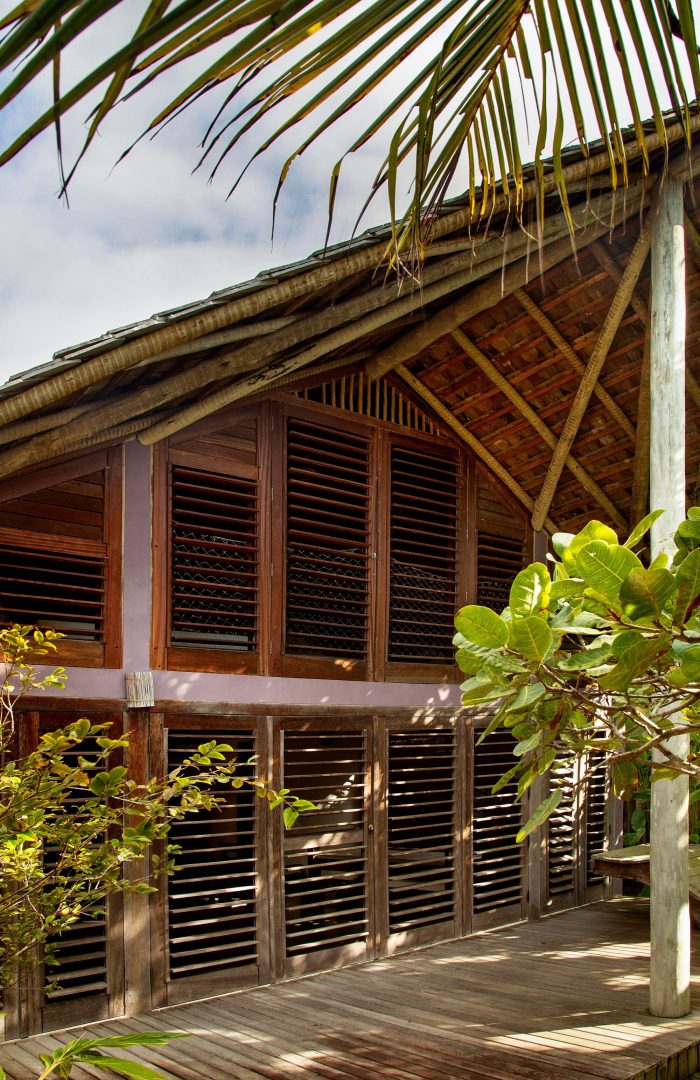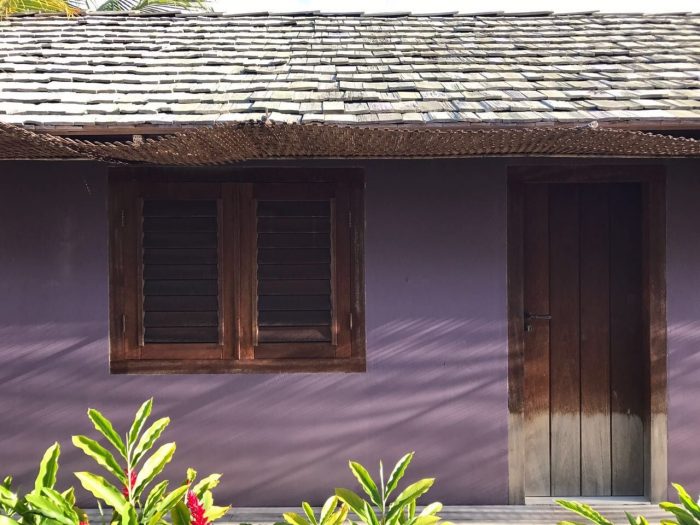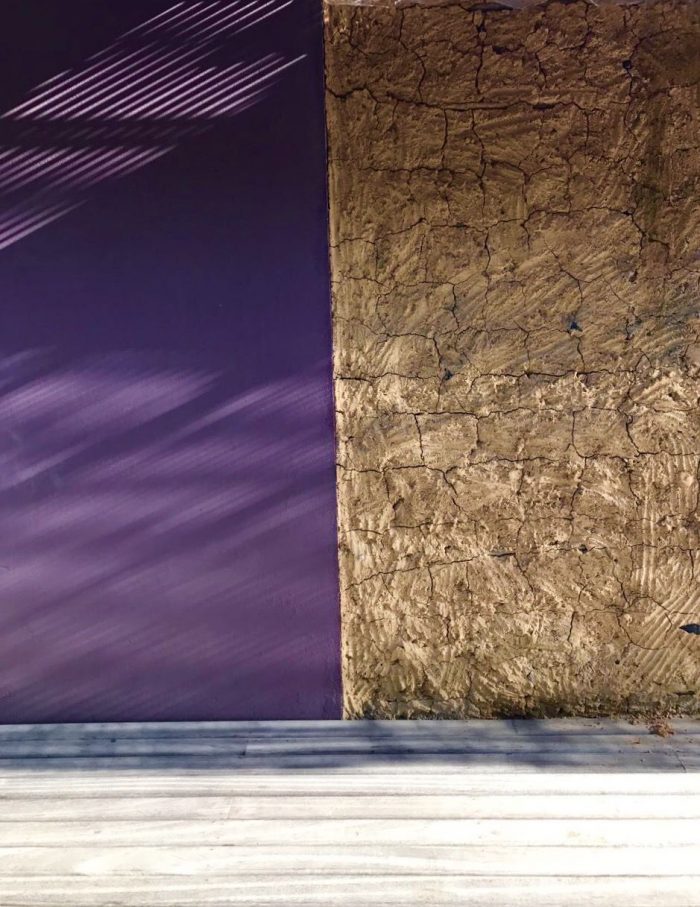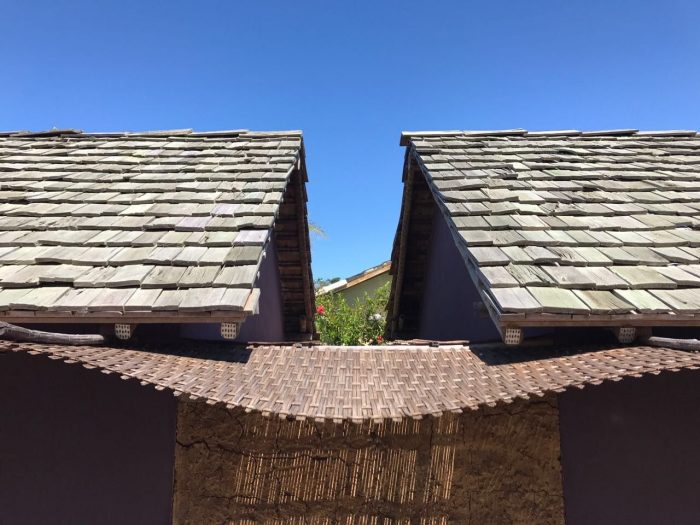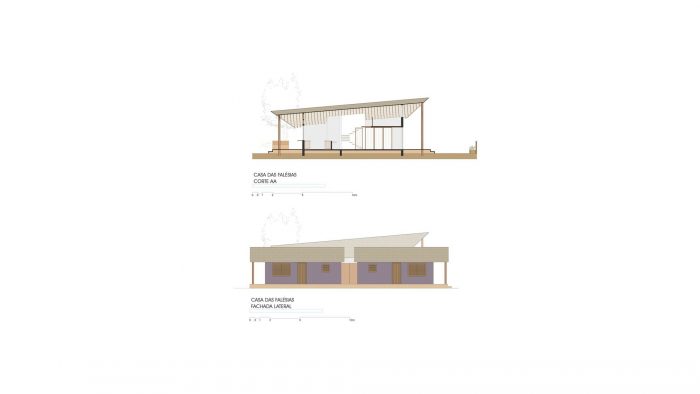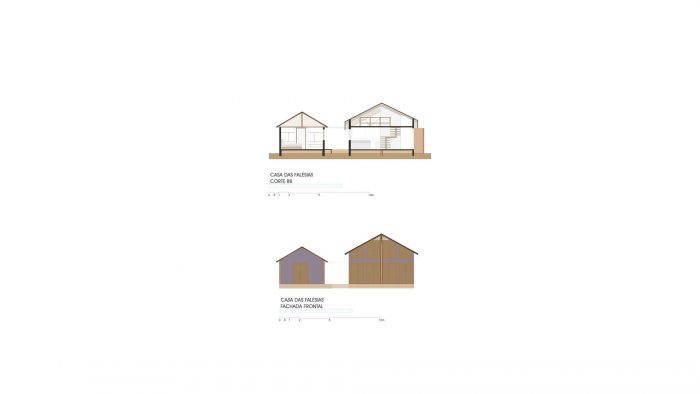世界正在反思如何以及在哪里找到生活的质量。在这里,我们正在走向更温和、更缓慢,特别是更有意识的日子。
The world is reflecting on how and where to find the quality of life. Around here, we are heading for gentler, slower, and especially, more conscious days.
悬崖屋(Casa das Falésias)位于巴西巴伊亚州的卡拉瓦(Caraiva),这是一个停止了时间的地方,汽车不能进入,一边是河,另一边是海,村庄保持了它的乡土魅力,有沙子路,没有公共照明。这样一个特殊的地方也成为了这所房子的完美风景。
The Cliff House (Casa das Falésias) is located in Caraiva – Bahia – Brazil, a place that stopped in time, where cars don’t enter, limited on one side by the river, on the other by the sea, the village has kept its bucolic charm, with sandy streets and no public lighting. Such a special place also serves as the perfect scenery for this house.
如果说以前是炫耀性的东西让人眼前一亮,那么今天我们需要重塑自己,以满足日益谨慎、沉思的需求。该项目采用的建筑元素强化了这一理念。
If before it was ostentation that sparkled the eyes, today we need to reinvent ourselves to meet an increasingly discreet, contemplative demand. The project uses construction elements that reinforce this philosophy;
用于灰水处理的香蕉树圈沟,是农村卫生设施的社会技术范例,保护了地下水位的完整性。
带有冬季花园的开放式浴室。
房屋内的内部花园允许自然采光和通风。
太阳能板用于水加热。
项目中出现了许多百叶窗,从而提供了交叉通风,即使在巴伊亚最热的日子里,也能使房屋始终保持通风和凉爽。这种模式的百叶窗使我们有可能有一个窗帘,并能控制进入房间的光线。
Banana tree circle trench for greywater treatment, examples of social technology for rural sanitation, preserving the integrity of the groundwater table.
Open bathrooms with a winter garden.
An internal garden inside the house allows natural lighting and ventilation.
Solar plate for water heating.
Many shutter doors and windows are present in the project, thus providing cross ventilation and keeping the house always airy and cool even on the hottest days in Bahia. This model of shutter window gives us the possibility to have a curtain and to control the light entering the rooms.
拯救巴西建筑中的材料和建筑方法的起源是一个漫长的过程。在Casa das Falésias,我们在开放的浴室和客厅使用土坯墙,浸入我们的本土根源,房子的整个屋顶是由taubilha(木瓦的屋顶)制成的,这也使得环境的热和声舒适度有了很大的不同。
It is a long way to rescue the origins of the materials and construction methods in Brazilian architecture. At Casa das Falésias we use adobe walls in the open bath and in the living room, dipping into our indigenous roots, and the entire roof of the house is made of taubilha (roof with wooden tiles), which also makes all the difference in the thermal and acoustic comfort of the environment.
这个几乎没有墙的房子有一个双高的天花板,其中的夹层提供了振幅。连接两个街区的开放式走廊由帕塔克索印第安人制作的天然花架覆盖。海滩房屋并不都是一样的。在装饰上,来自巴伊亚的风格非常明显。
The almost wall-less house has a double-height ceiling with a mezzanine that provides amplitude. The open corridor connecting the two blocks is covered by a natural trellis made by the Pataxó Indians. Beach houses are not all the same. In the decoration, the style from Bahia is very clear.
这个项目的重点是使用当地材料,重新设计物品,摆脱蓝白相间的陈词滥调,所以我们应用了我们自己的dendê,来自巴伊亚的传统棕榈油。当地的艺术家加强了这种身份,并使之有尊严。始终使用当地供应商并与之合作,训练眼睛,并生活在巴伊亚!”。
The project is focused on using local materials, resignifying objects, and escaping from the blue and white cliché, so we applied our own dendê, the traditional palm oil from Bahia. Local artists reinforce and dignify this identity. Always using and working with local suppliers, training the eye, and living Bahia!
Architects: Vivian Hunnicutt arquitetas e associadas
Area : 120 m²
Year : 2017
Photographs :Oka fotografia
Manufacturers : Casarão Pedro Baiano, Cerâmica Trancoso, DATE, Deca, Palimanan, Piaçava Trancoso, Suvinil, Via Sol
Lead Architect : Vivian Hunnicutt
Collaborator : Clarice Lacerda
Project Team : Clarice Lacerda, Clarice Guimarães, Helena Nocchim, Pedro Quintanilha
Drawings : Pedro Quintanilha
Straw Panel : Seu Tião
City : Caraíva
Country : Brazil

